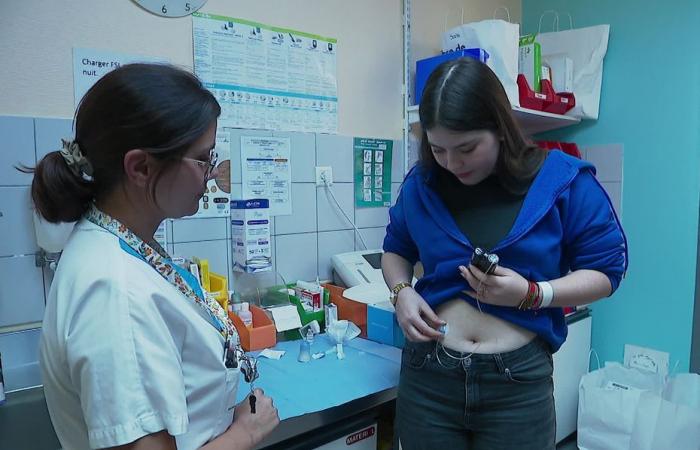Faced with type 1 diabetes, technological advances are revolutionizing the lives of young patients. Thanks to new generation insulin pumps, children and adolescents like Emma, 15, benefit from lighter and less stressful care. REPORTING.
Company
From daily life to major issues, discover the subjects that make up local society, such as justice, education, health and family.
France Télévisions uses your email address to send you the “Society” newsletter. You can unsubscribe at any time via the link at the bottom of this newsletter. Our privacy policy
Emma, a teenager from Montpellier, is spending a stay at the Saint-Pierre Institute in Palavas-les-Flots (Hérault), in the diabetology department. Having suffered from type 1 diabetes since the age of 7, her body no longer produces insulin. Without medical treatment, his blood sugar could rise to dangerous levels, putting his health at risk.
For Emma, controlling her blood sugar is a vital necessity. “Hyperglycemia is very dangerous. It can attack organs, so it has to be really balanced“, she explains. Despite efforts to normalize daily life, the constraints remain heavy, especially for the youngest.
“Especially for a child, you have to be constantly supervised. You are asked a lot of questions. In fact, it’s quite a heavy load,” she confides.
But this burden has been reduced thanks to an innovation: a new generation insulin pump. Connected to the patient via a catheter, this pump delivers insulin in infinitesimal doses throughout the day, depending on actual needs. Julie Duquesnay, childcare nurse at the Saint-Pierre Institute in Palavas-les-Flots, highlights the advantages of this technology: “it can stop in the event of hypoglycemia or send insulin automatically in the event of hyperglycemia. These pumps are equipped with sensors and alarms that warn patients before they even feel the signs. This reassures them enormously.
For Emma, this technological advance is a real revolution: “With this pump, I no longer really feel like I’m diabetic, even if I have to change the catheter and sensor. Before, we had to do injections and dextros, it was complicated. Now my blood sugar is much more stable, and that’s a relief. »
There are several types of diabetes, the most common being type 1 and type 2 diabetes. Type 1 diabetes, often diagnosed in young people, is an autoimmune disease where the body no longer produces insulin. Type 2 diabetes, more common in adults, often results from an unhealthy lifestyle, leading to insulin resistance. Each year, 2,200 children under the age of 15 report type 1 diabetes in France. This figure is constantly increasing. Technological advances are even more important.
For pediatrician Fabienne Dalla-Vale, specialized in diabetology, the objective is clear: to avoid complications in the long term. “These children will live to be 90 or 100 years old. The challenge is that they do not suffer complications linked to chronic hyperglycemia, such as retinopathy or cardiovascular accidents. Thanks to these tools, we hope that they will have an adult life without being seriously chronically ill. »
Technological advances, such as artificial intelligence and device miniaturization, point to a future where nearly autonomous pumps could be installed under the skin.






